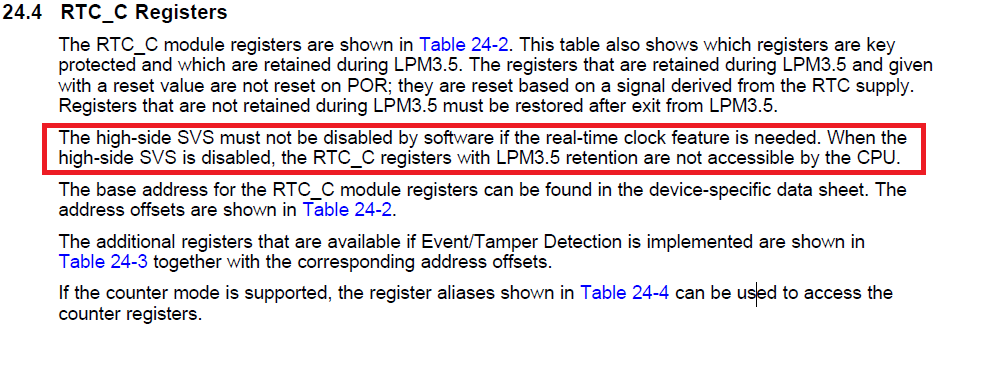Other Parts Discussed in Thread: MSP430F6779, MSP-TS430PZ100B, , MSP-FET, MSP430F6736
Hi anyone
I have a coin battery back up to the MCU via AUXCC3.
(The intention behind the battery backup is purely to keep the RTC & Backup RAM, powered..it is not to power the MSP in any of its modes.)
The board gets its normal power from another (failable) source.
When the main power drops, the battery kicks in.the RTC is supposed to tick over....except it doesnt.
I checked the 32k crystal via a scope probe on the one leg...that kicked in nicely when the battery kicked in.
The backup ram retained its data.
But the RTC...very strange...it retained the time that the power went down & then once power came back, it resumed from that time. So it means it never ticked over.
There is no indication that anything was amiss....SYSRSTIV, on startup, returns 2h indicating a brownout which is fine.
My setting for AUXVCC3...AUX3CHCTL = AUXCHKEY | AUXCHV_1 | AUXCHC_1 | AUXCHEN;
Any possible reason for this?
What can i do to determine more about what is happening?
thanks in advance.


